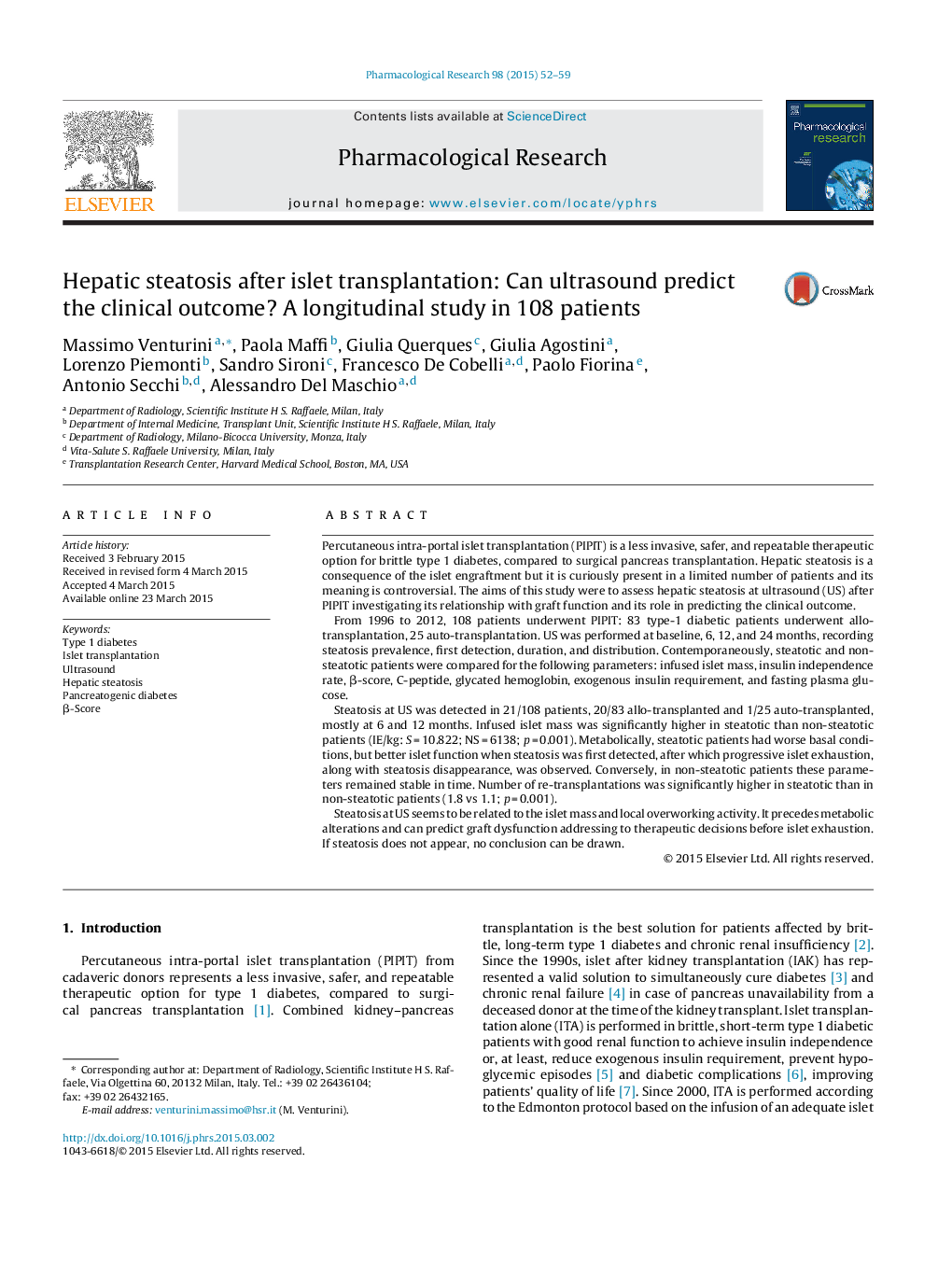| کد مقاله | کد نشریه | سال انتشار | مقاله انگلیسی | نسخه تمام متن |
|---|---|---|---|---|
| 2561903 | 1560842 | 2015 | 8 صفحه PDF | دانلود رایگان |
Percutaneous intra-portal islet transplantation (PIPIT) is a less invasive, safer, and repeatable therapeutic option for brittle type 1 diabetes, compared to surgical pancreas transplantation. Hepatic steatosis is a consequence of the islet engraftment but it is curiously present in a limited number of patients and its meaning is controversial. The aims of this study were to assess hepatic steatosis at ultrasound (US) after PIPIT investigating its relationship with graft function and its role in predicting the clinical outcome.From 1996 to 2012, 108 patients underwent PIPIT: 83 type-1 diabetic patients underwent allo-transplantation, 25 auto-transplantation. US was performed at baseline, 6, 12, and 24 months, recording steatosis prevalence, first detection, duration, and distribution. Contemporaneously, steatotic and non-steatotic patients were compared for the following parameters: infused islet mass, insulin independence rate, β-score, C-peptide, glycated hemoglobin, exogenous insulin requirement, and fasting plasma glucose.Steatosis at US was detected in 21/108 patients, 20/83 allo-transplanted and 1/25 auto-transplanted, mostly at 6 and 12 months. Infused islet mass was significantly higher in steatotic than non-steatotic patients (IE/kg: S = 10.822; NS = 6138; p = 0.001). Metabolically, steatotic patients had worse basal conditions, but better islet function when steatosis was first detected, after which progressive islet exhaustion, along with steatosis disappearance, was observed. Conversely, in non-steatotic patients these parameters remained stable in time. Number of re-transplantations was significantly higher in steatotic than in non-steatotic patients (1.8 vs 1.1; p = 0.001).Steatosis at US seems to be related to the islet mass and local overworking activity. It precedes metabolic alterations and can predict graft dysfunction addressing to therapeutic decisions before islet exhaustion. If steatosis does not appear, no conclusion can be drawn.
Hepatic steatosis at ultrasound after islet transplantation in type 1 diabetes: an early sign of graft dysfunction.Figure optionsDownload high-quality image (114 K)Download as PowerPoint slide
Journal: Pharmacological Research - Volume 98, August 2015, Pages 52–59
